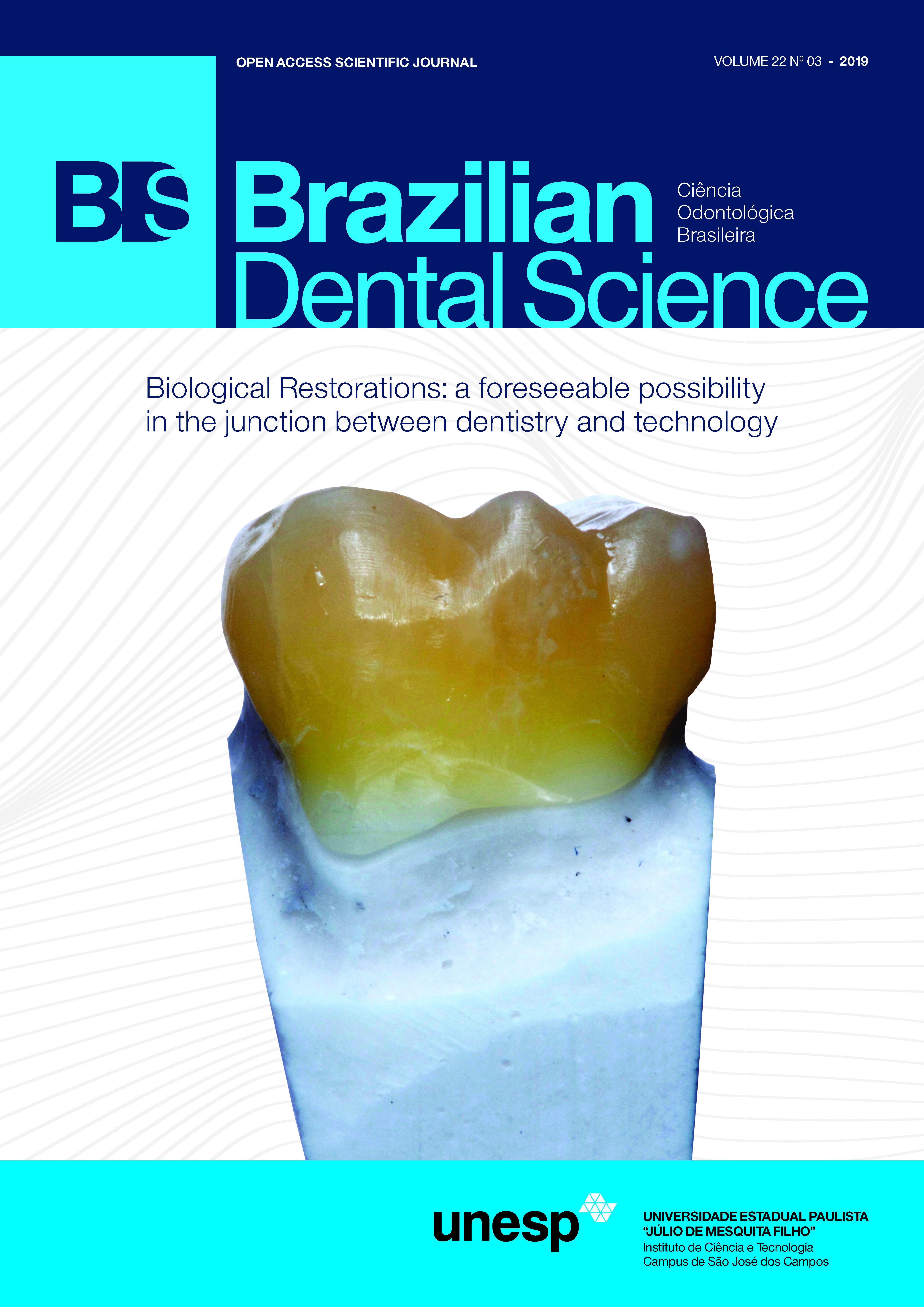Influence of surface treatments in flexural strength and superficial topography of a lithium disilicate ceramic
DOI:
https://doi.org/10.14295/bds.2019.v22i3.1678Resumo
The aim of the study was to evaluate the influence of different surface post-etching treatments in flexural strength, contact angle and surface roughness of a lithium disilicate ceramic. 60 bars (16x2x4mm) were divided in six groups (n=10): C, no treatment; HF, hydrofluoric acid for 20s (HF) + washing (60s), drying (30s); HFL, HF + washing (60s), drying (30s) and luting; HFNL, HF + washing (60s) + neutralization with sodium bicarbonate (SB) for 40s + washing (5s), drying (30s) and luting; HFUL, HF + washing (60s) + ultrasonic bath (UB) for 4 min, drying (30s) and luting; HFNUL, HF + washing (60s) + SB (40s) + UB (4 min) and luting. The bars were submitted to three-points flexural strength test. To analyze roughness and contact angle 25 ceramic blocks (12x7x7 mm) were divided into five groups (n=5): C - no treatment; HF - HF ; HFU - HF and UB for 5 min ; HFN - HF and SB; HFNU - HF, UB and SB. A scanning electron microscope (SEM) analysed the surface of the samples. ANOVA one-way statistical analysis was done for comparison of results. There was no statistical difference for flexural strength (p-value=0.15) and for surface roughness (p-valor=0.15). However, it was obtained statistically significant difference for contact angle (p-valor=0.00). SEM images showed precipitates after the acid etching, which were removed by post-etching treatments. It can be concluded that the different post-etching surface treatments did not increase the flexural strength, surface roughness and ceramic wetting, but it influenced the SEM images.
Downloads
Downloads
Arquivos adicionais
Publicado
Como Citar
Edição
Seção
Licença
TRANSFERÊNCIA DE DIREITOS AUTORAIS E DECLARAÇÃO DE RESPONSABILIDADE
Toda a propriedade de direitos autorais do artigo "____________________________________________________________________" é transferido do autor(es) para a CIÊNCIA ODONTOLÓGICA BRASILEIRA, no caso do trabalho ser publicado. O artigo não foi publicado em outro lugar e não foi submetido simultaneamente para publicação em outra revista.
Vimos por meio deste, atestar que trabalho é original e não apresenta dados manipulados, fraude ou plágio. Fizemos contribuição científica significativa para o estudo e estamos cientes dos dados apresentados e de acordo com a versão final do artigo. Assumimos total responsabilidade pelos aspectos éticos do estudo.
Este texto deve ser impresso e assinado por todos os autores. A versão digitalizada deverá ser apresentada como arquivo suplementar durante o processo de submissão.




























